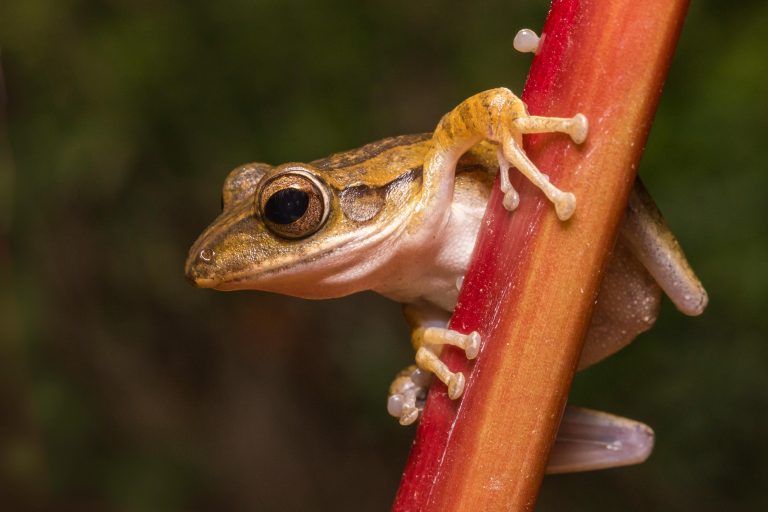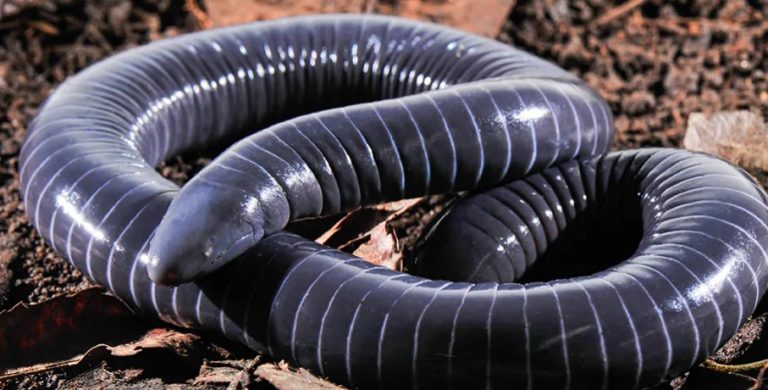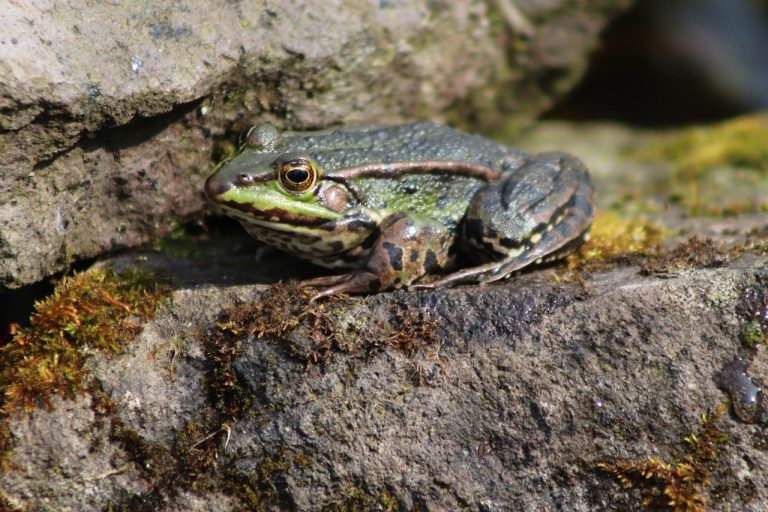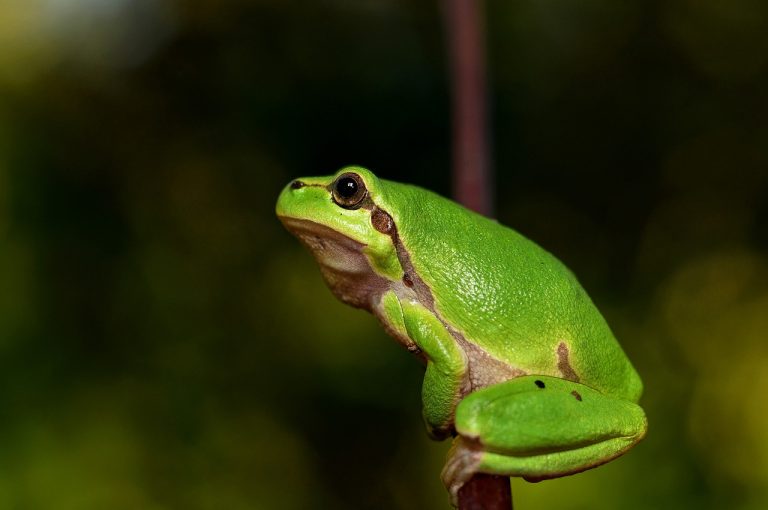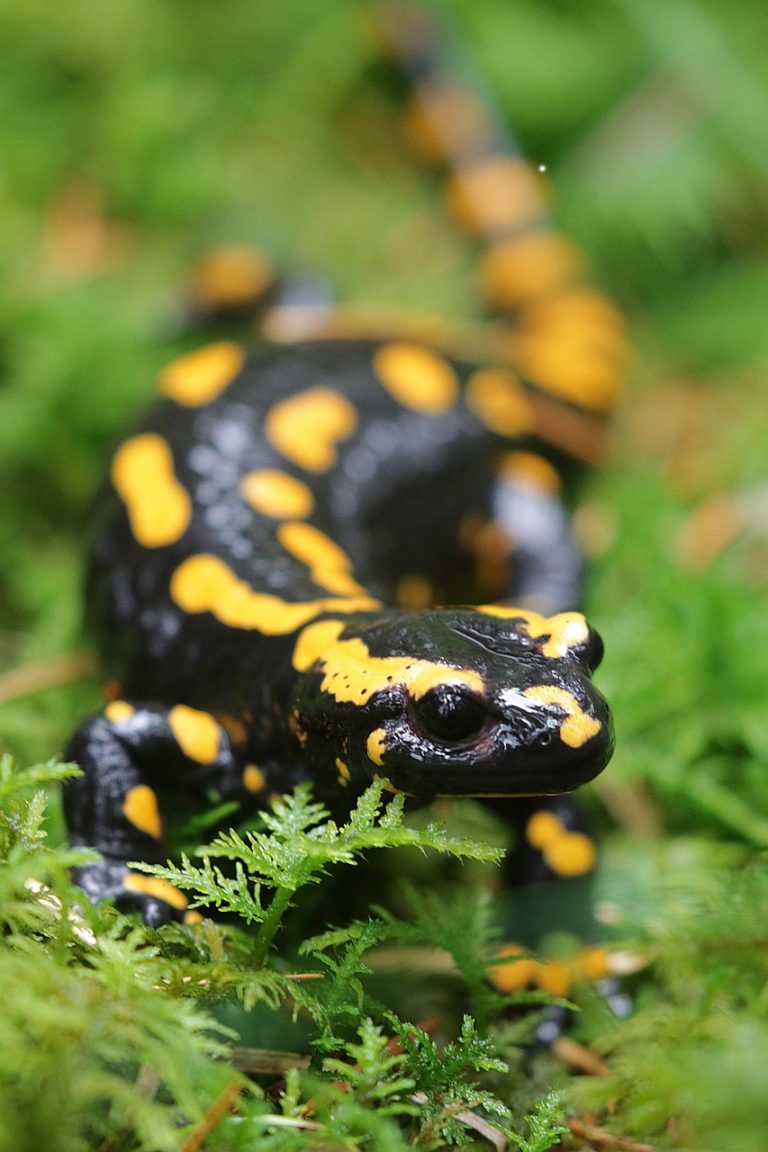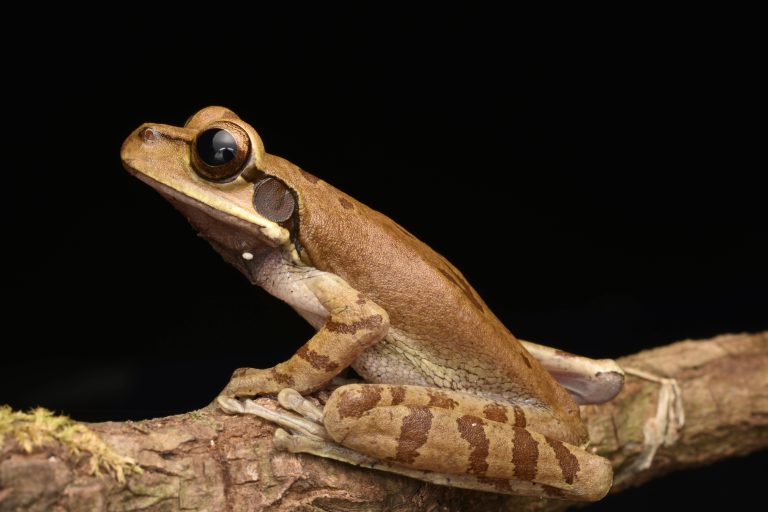Green Tree Frog
“Green tree frogs breathe through their skin”
Certainly! Here is the scientific classification and additional information about the Green Tree Frog:
Green Tree Frog (Hyla cinerea) Scientific Classification:
- Kingdom: Animalia
- Phylum: Chordata
- Class: Amphibia
- Order: Anura
Conservation Status:
- Least Concern
Locations:
- North America
- Oceania
Green Tree Frog Facts
Prey
- Flies
- Mosquitoes
- Crickets
- Moths
- Other small insects
Name of Young
- Tadpole
Group Behavior
- Social
Fun Fact
- Green tree frogs breathe through their skin.
Estimated Population Size
- Unknown
Biggest Threats
- Habitat destruction
- Air pollution
Most Distinctive Feature
- They’re amphibians, but they live in trees.
Other Names
- The Australian green tree frog is also known as White’s tree frog or dumpy tree frog.
Habitat
- Forested wetlands
- Marshlands
Predators
- Birds
- Snakes
Diet
- Carnivore
Type
- Amphibian
Number of Species
- 2
Locations
- Australia
- North America
- Southeast Asia
Green Tree Frog Physical Characteristics
Color
- Green
Skin Type
- Permeable
Lifespan
- Australian species: Up to 15 years in terrariums
- American species: Typically 6 years in captivity
Weight
- A few ounces
Length
- Australian species: Approximately 4 inches
- American species: Approximately 2.5 inches
Age of Sexual Maturity
- 2 years
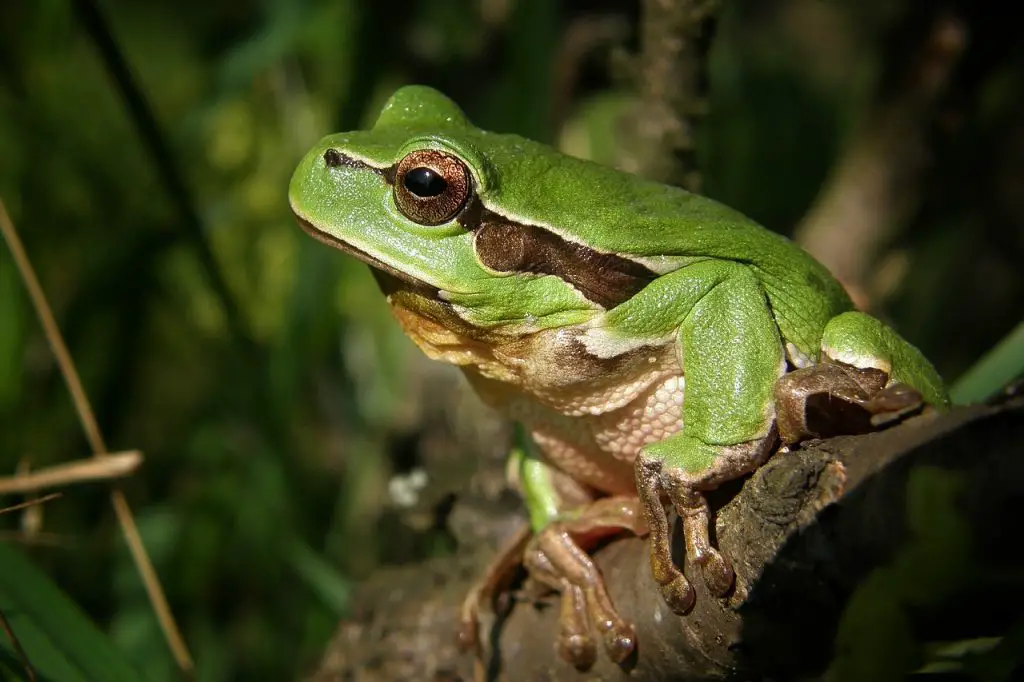
5 Incredible Facts!
5 Incredible Facts About Green Tree Frogs
Color Changing Abilities
- Green tree frogs can change their color based on environmental conditions. Factors such as temperature, ambient lighting, and other conditions influence these color changes, allowing them to blend in with their surroundings and avoid predators.
Group Name
- A group of frogs is known as an “army.” This term highlights the social behavior of these amphibians when they gather in large numbers, especially during breeding seasons.
Oxygen Exchange Through Skin
- These frogs can exchange oxygen through their skin, a process known as cutaneous respiration. This ability is crucial for their survival, particularly when they are in water or in environments with varying oxygen levels.
Water Evaporation Control
- Australian green tree frogs are believed to have the ability to control the amount of water that evaporates from their skins. This adaptation helps them manage hydration levels and survive in different environmental conditions, especially in dry or hot climates.
Amplexus Behavior
- Though fertilization in green tree frogs occurs externally, they engage in a coitus-like behavior called “amplexus.” During amplexus, the male frog grasps the female with his front legs, positioning himself to fertilize the eggs as they are laid, ensuring successful reproduction.
Scientific name
The scientific name of the Australian green tree frog is Litoria caerulea. The genus name “Litoria” encompasses tree frogs found in Australia and nearby regions like New Guinea, the Bismarck Archipelago, and the Solomon Islands. While the species within this genus look quite different from one another, they all share the characteristic of unpigmented eyelids and horizontal irises. The species name “caerulea” means “blue” in Latin, referencing the blue pigments that overlay a yellow base, giving the frog its striking emerald green color.
The American green tree frog is scientifically known as Hyla cinerea. The genus “Hyla” is part of the tree frog family Hylidae and was named after the mythological figure Hylas, a companion of Heracles. The species name “cinerea” translates to “grey” in Latin, describing the olive hue of this frog’s skin.
The green tree frog native to Taiwan is called Zhangixalus prasinatus. This frog belongs to the order Anura and the family Rhacophoridae. It is also known as the tributary flying frog or the Taiwanese green tree frog.
3 Types of Green Tree Frogs
Among the approximately 800 different species of tree frogs, only three are commonly referred to as “green tree frogs”:
- American Green Tree Frog (Hyla cinerea)
- Australian Green Tree Frog (Litoria caerulea)
- Emerald Green Tree Frog (Rhacophorus prasinatus)
Evolution
Evolutionary History of the Green Tree Frog
The green tree frog’s evolutionary history traces back to a common ancestor in South America over 10 million years ago. This ancestor was likely a terrestrial animal that eventually adapted to an arboreal lifestyle, which is why modern green tree frogs are proficient climbers and can leap from branch to branch with ease.
Spread and Adaptation
Over time, these frogs expanded their range, moving through Central America and into North America. They typically inhabit trees close to bodies of water, a preference that has remained consistent throughout their evolution.
Current Distribution
Today, green tree frogs can be found in parts of Mexico, as well as in various states in the United States, including Florida, Arizona, Texas, and Louisiana. They have also been introduced to regions outside their native range, such as New Zealand and Hawaii, with varying degrees of success in establishing stable populations.
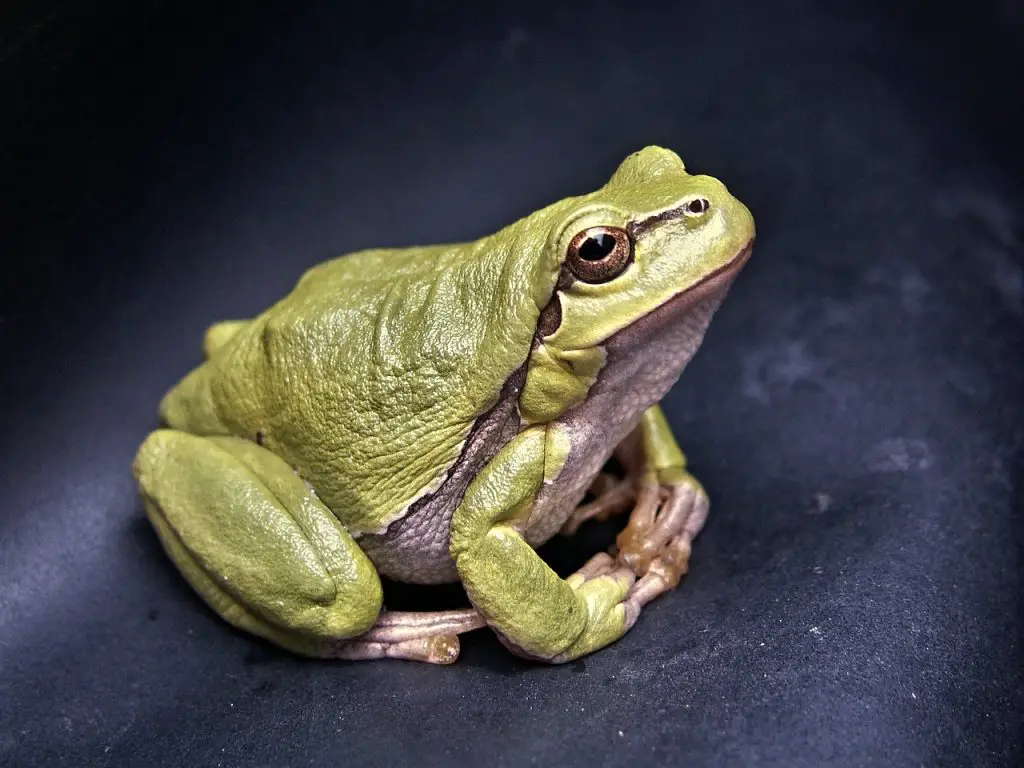
Appearance
Characteristics of Green Tree Frogs
Color Changing Abilities
All three species of green tree frogs possess a chameleon-like ability to change color based on temperature, lighting conditions, and their general surroundings. Typically:
- Australian Green Tree Frog (Litoria caerulea): Bright jade green
- American Green Tree Frog (Hyla cinerea): Less vivid, greyer green
These colors help the frogs blend in with the leaves and vegetation where they live.
Physical Characteristics
Australian Green Tree Frog (Litoria caerulea)
- Size: Larger than the American green tree frog
- Belly: White
- Limbs: Short, strong, ending in digits specialized for sticking to surfaces like trees
- Mating Adaptations: Males develop a black pad on their proximal digit during mating season to grasp females better during amplexus.
- Vocal Sac: Large and grey in males, white in females
- Sexual Dimorphism: Females are slightly larger than males when fully grown
American Green Tree Frog (Hyla cinerea)
- Limbs: End in long, thin digits with sticky spatulate pads
- Behavior: While the Australian green tree frog appears to grasp branches, the American green tree frog simply sticks to them.
- Distinctive Marking: A white or cream-colored lateral stripe runs from the jaw to the groin.
These differences in physical characteristics and behaviors highlight the unique adaptations of each green tree frog species to their specific environments.
Behavior
Social Behavior and Vocalization
Frogs are highly social animals that often live in groups. A group of frogs is referred to as either an “army” or a “chorus.” This social aspect is reflected in their enthusiastic vocalizations, especially after a rain shower. Their distinctive croaks serve multiple purposes, including mating rituals and warning signals against predators.
Nocturnal Lifestyle
Both the Australian and American green tree frogs are primarily nocturnal creatures. During the day, they prefer to seek refuge in cooler, moister, and darker areas, emerging as the sun sets to feed and vocalize.
Terrarium Pets
Both species of green tree frogs are popular choices as terrarium pets. However, there are notable differences in their behavior:
- Australian Green Tree Frog: Bold and relatively unafraid of humans.
- American Green Tree Frog: Timid and does not tolerate frequent handling.
These differences in behavior contribute to varying levels of interaction and care required for each species when kept as pets.
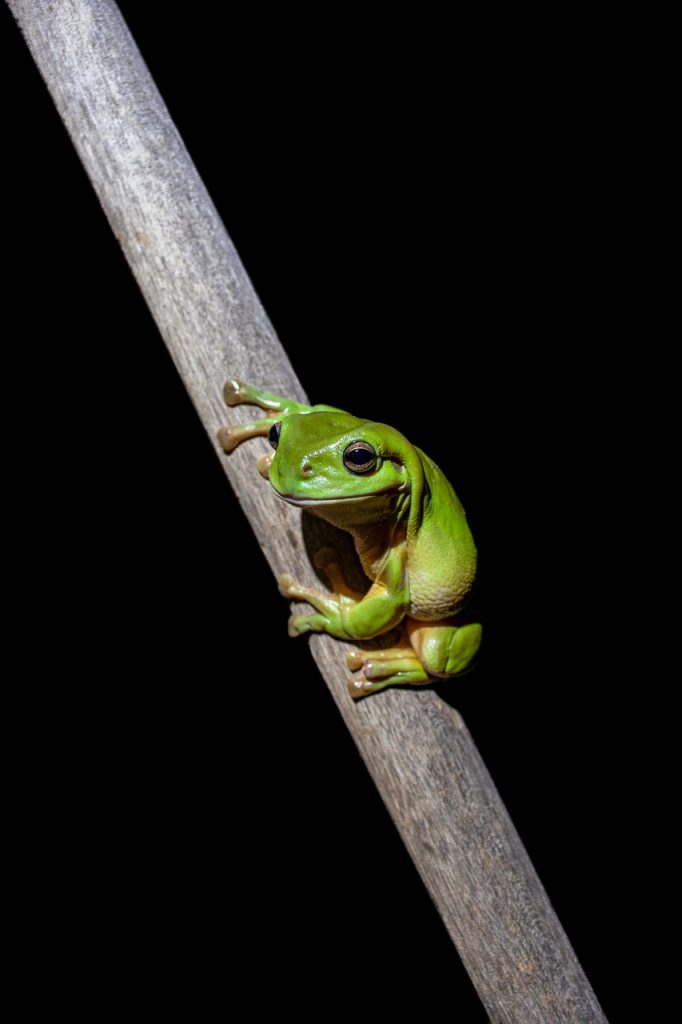
Habitat
Australian Green Tree Frogs (Litoria caerulea)
- Habitat Range: Extends from relatively dry eucalyptus stands in northwest Australia to the tropical forests of New Guinea.
- Adaptations: These frogs rely on moist skin for oxygen exchange, with speculation about a bioregulation mechanism allowing them to control skin moisture. This enables them to thrive in both seasonally dry and wet habitats.
- Homing Ability: Australian green tree frogs seem to possess a homing ability, capable of returning to their capture spot even after being released at a distance.
American Green Tree Frogs (Hyla cinerea)
- Preferred Habitat: Trees near lakes, marshes, and streams.
- Geographic Distribution: Found as far north as Delaware, as far south as the Florida Keys, and as far west as Texas. Particularly abundant in the Piedmont and coastal plains of North Carolina.
Taiwanese Green Tree Frogs (Zhangixalus prasinatus)
- Habitat: Bamboo forests and orchards in northern Taiwan.
- Elevation Range: Typically found at elevations between 1200 to 1800 feet.
Each species of green tree frog has adapted to its specific habitat, whether it be the diverse landscapes of Australia and New Guinea, the varied regions of North America, or the bamboo forests of Taiwan. These adaptations allow them to thrive in their respective environments and contribute to their unique behaviors and characteristics.
Diet
- Insectivores: All species of green tree frogs primarily feed on insects such as flies, mosquitoes, crickets, locusts, moths, and other small insects.
Feeding Mechanism
- Teeth: Frogs only have teeth on their upper jaws, which are not meant for chewing but rather for holding prey in place.
- Tongue: Their tongues are remarkably long, often reaching up to one-third the length of their bodies. Frogs use their tongues as a bait, sticking them out to attract prey. Once the prey is within reach, they retract their tongues swiftly, consuming the prey whole.
Behavior
- Overeating: Australian green tree frogs are known to overeat, leading to their nickname “dumpy tree frog.” This tendency to overeat can cause them to grow fat.
Green tree frogs exhibit specialized feeding mechanisms and behaviors tailored to their insectivorous diet. Their unique adaptations allow them to efficiently catch and consume prey, contributing to their survival and ecological role in their respective habitats.
Predators and Threats
Australian Green Tree Frogs (Litoria caerulea)
- Predators: Since European settlement, dogs, cats, snakes, and birds have become predators of Australian green tree frogs.
- Lifespan: In captivity, they can live more than 15 years due to having few natural predators.
American Green Tree Frogs (Hyla cinerea)
- Predators: Face threats from snakes, birds, large fish, and even other frog species. They breed in bodies of water inhabited by predatory fish, and as tadpoles, they are preyed upon by aquatic insects.
- Lifespan: Shorter than their Australian counterparts, with captive individuals rarely living longer than five years.
Habitat Destruction and Conservation
- Australian Green Tree Frogs: Population decline due to habitat destruction through drainage and wetland clearance, particularly in the Sydney bioregion.
- American Green Tree Frogs: Thrive throughout their geographic range, especially in places like Florida and North Carolina. However, amphibians, including green tree frogs, are highly susceptible to extinction due to human activities.
Indicator Species and Environmental Sensitivity
- Green tree frogs, like other amphibians, are indicator species sensitive to pollution and environmental changes.
- Their declining numbers serve as a warning sign of worsening planetary conditions, as they are highly sensitive to changes in their habitat.
Diet of Green Tree Frogs
- Diet: Green tree frogs are insectivores, feeding on flies, mosquitoes, crickets, and other small insects.
Green tree frogs face various threats from predators and habitat destruction, particularly in Australia. Their declining populations highlight the importance of conservation efforts to preserve their habitats and mitigate human activities’ negative impacts on the environment. Additionally, their sensitivity to environmental changes underscores their role as indicator species, signaling broader ecological health concerns.
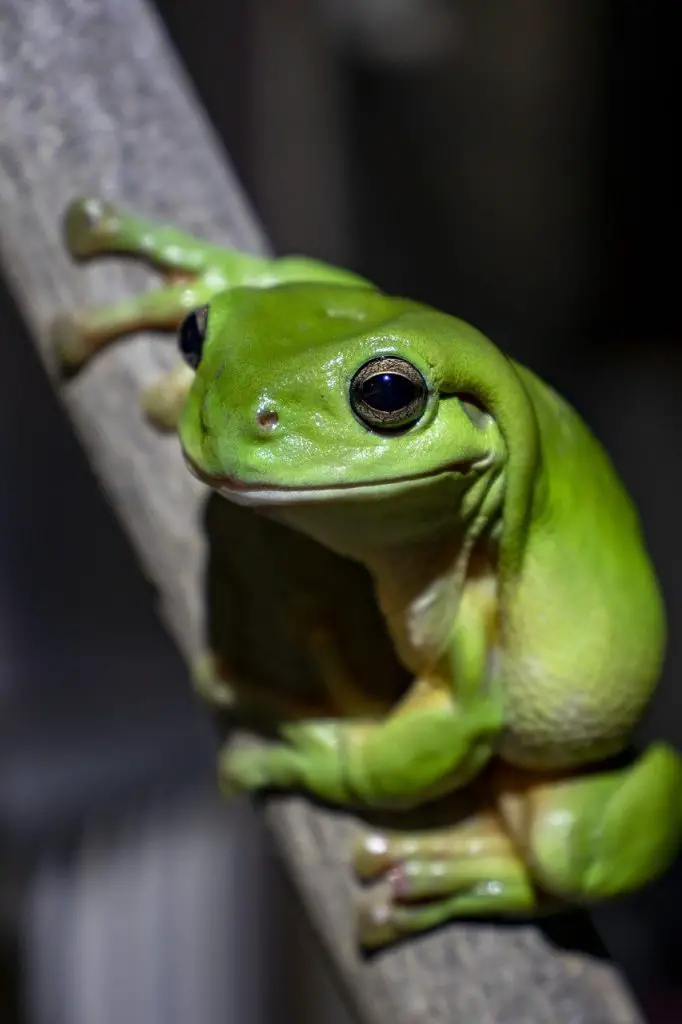
Reproduction and Life Cycle
Breeding Season
- Timing: Middle of March to September, typically following rainstorms.
- Influencing Factors: Breeding cycles are influenced by temperature and precipitation, with males vocalizing more as temperatures rise and the length of the day increases.
Mating Process
- Amplexus: Mating takes place in water through amplexus, where the male grasps the female tightly around the back, aligning their cloacal openings for fertilization.
- Fertilization: External fertilization occurs as the female expels her eggs through the deposited sperm cloud.
- Egg Numbers: American green tree frogs lay approximately 400 eggs, while Australian counterparts lay 150 to 300 eggs.
Egg Development and Tadpole Stage
- Hatching Time: Australian green tree frog eggs hatch in three days, while American green tree frog eggs take two days longer.
- Tadpoles: Offspring, called tadpoles, are aquatic dwellers with tails, mouths, and rudimentary gill tracts.
- Metamorphosis: Tadpoles undergo metamorphosis, a series of physiological changes preparing them for life on land. American frog populations typically complete metamorphosis within eight weeks, while Australian frogs’ durations vary between four and 12 weeks.
Parental Care
- Lack of Interest: Neither species shows interest in offspring once mating is complete.
The breeding behavior of green tree frogs involves intricate processes influenced by environmental factors such as temperature and precipitation. Mating rituals, fertilization, and egg development are crucial stages in the reproduction of these amphibians, leading to the emergence of tadpoles and eventual metamorphosis into land-dwelling frogs. Despite the lack of parental care, these frogs exhibit fascinating reproductive adaptations for survival in their habitats.
Population
American Green Tree Frogs (Hyla cinerea)
- Range: Found in wetlands across the southeastern United States, extending as far west as central Texas. Common in Florida and North Carolina. Some observations in Hawaii, possibly descendants of escaped terrarium individuals.
- Population Estimate: Biologists do not have a precise estimate for the population size of American green tree frogs.
- Conservation Status: Not listed on any endangered species list, indicating a stable population status.
Australian Green Tree Frogs (Litoria caerulea)
- Range: Distributed throughout the northeast regions of Australia and in New Guinea.
- Threats: In suburban areas, threats include pollution and introduced predator animals like dogs and cats brought by European settlers.
- Population Status: Outside suburban areas, population numbers are stable.
- Conservation Status: Enjoy protected status as native animals under the federal Environment Protection and Biodiversity Conservation Act 1999 in Australia.
Conclusion
Both American and Australian green tree frogs have distinct geographic distributions and face different conservation challenges. While the American species maintains a stable population across its range, Australian green tree frogs encounter threats from pollution and introduced predators in suburban areas. Conservation efforts, including legal protection under environmental legislation, aim to safeguard the populations of these iconic amphibians.
Reference:
